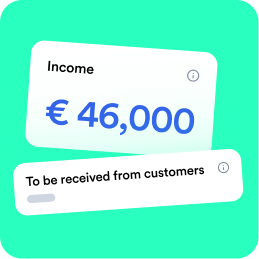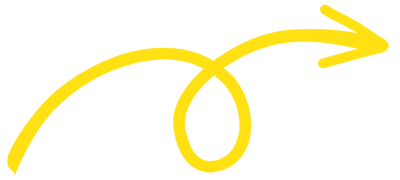Even as a self-employed person in secondary occupation, you cannot escape it: social security contributions. Every 3 months, you can expect a statement from your social insurance fund in your (digital) mailbox. Which means that every year you have to pay no less than 20.5% of your taxable income to the state. How exactly does the calculations work? And what do you get back from the government in return?
How much is the social security contribution for the self-employed in secondary occupation? 🔎
You have to pay social security contributions on your income. Self-employed in secondary occupation and self-employed in main occupation both pay 20.5% of their taxable income. However, the minimum contribution is significantly lower for self-employed in secondary occupation:
- Secondary occupation: €98.52 quarterly
- Main occupation: €890.51 quarterly
The amounts include the required administration cost of 3.05%, which can rise to 4.25% depending on the social insurance fund, increasing the minimum contribution.

If you earn more than €1865.45 as a secondary occupation yearly, you will pay the minimum €394.08 per year in social security contributions.
Why do you have to pay social security contributions?
By being self-employed, you have extra income so you are also taxed extra. Social security contributions allow the government to pay for health insurance, pensions, parental leave, growth packages… paid.
What do you get back in return? 💸
Unfortunately, nothing. As a secondary occupation, you build up your social rights such as your sickness benefit and your pension through your main occupation. So you get nothing extra in exchange for all the social security contributions you pay as a secondary occupation. Unfortunate, but unfortunate.
Questioning exemption as self-employed in secondary occupation
If you have less than €1,865.45 net taxable income, you do not have to pay social security contributions. You can then question your social insurance fund for an exemption.
If this exemption turns out to be justified, that is fine. But if the exemption turns out to be wrong, you still have to pay all social security contributions plus interest, which can be quite high.
Difference between provisional and final contributions ⚖️
Provisional contribution
As a self-employed person in secondary occupation, you pay a provisional contribution every quarter. This amount is based on your net taxable annual income from three years earlier.
Have you been self-employed for less than three years? Then you pay provisional social security contributions of EUR 98.52 quarterly. Are you expecting a higher income? Then you may be able to request an increase in your provisional contributions.
Final contribution
Your final social security contributions depend on your final annual income. Do you earn less than EUR 1,865.45? Then, as a self-employed person in secondary occupation, you pay no social security contributions.
If you earn more than this amount, you pay 20.5% on the first annual income bracket (up to €72,810.95) and 14.16% on the second annual income bracket (€72,810.95 – €107,300.30). You never paid more than €5103.53 quarterly.
Did you pay too few social security contributions to be paid? Then you still have to pay them, but you will also have to pay interest.
Did you pay too many social security contributions? Then you will get them back about 2 years later.

Attention!
If you did not work a full year, be sure to take the prorating into account.
Proratisation: what if you have not been self-employed for a full year?
Attention! As a self-employed person, your contribution is calculated on your net taxable professional income. If you are not enabled for a full year (4 quarters), your income is ‘prorated’. This means that it is converted into an expected annual income as if you had worked a full year.
Based on this amount, it is then considered whether you still qualify for an exemption. So the prorated amount counts towards determining your exemption!
So per quarterly enabled, you can earn a maximum of €466.36.
An example:
An starts as self-employed in secondary occupation in the first quarter and has a net taxable income of €1,800.
➡️ An has a net taxable income of less than €1,865.45 so she benefits from the exemption on social security contributions.
Luc starts as self-employed in secondary occupation only in the 3rd quarter, and also has a net taxable income of €1,800.
➡️ Luc is enabled for 2 quarters, he earned more than €932.72 so he has to pay social security contributions.
Comprehensive summary of contributions
| Annual social security contributions | |
|---|---|
| Minimum provisional contribution | € 394,08 |
| Final contribution if your annual income is <€1,865.45 | €0 |
| Final contribution bracket 1 (€1,865.45 -€72,810.95) | 20,5% net taxable income |
| Final contribution bracket 2 (€72,810.95 -€107,300.30) | 20,5% net taxable income + 14.16% income bracket 2 |
| Maximum final contribution | €5.103,53 |
Minimum provisional contribution €394.08
Final contribution if your annual income is <€1,865.45 €0
Final contribution bracket 1 (€1,865.45 -€72,810.95) 20.5% net taxable income
Final contribution bracket 2 (€72,810.95 -€107,300.30) 20.5% net taxable income + 14.16% income bracket 2
Maximum final contribution €5,103.53
















